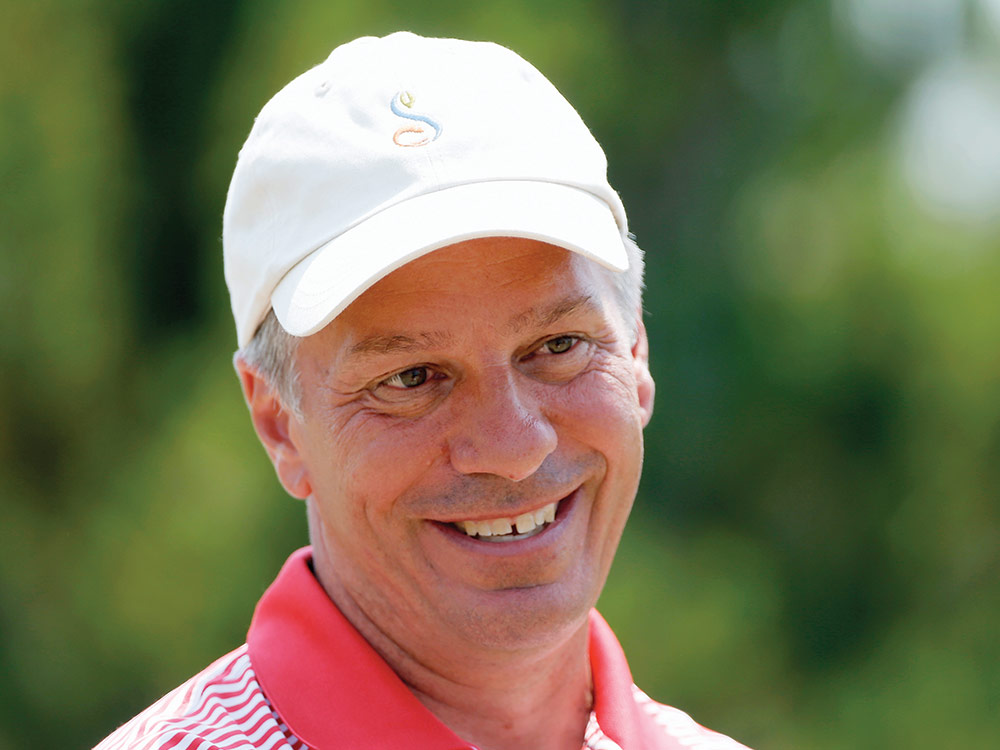ANOTHER redesign project in Australia, another Tom Doak appointment.
It seems we can’t get enough of the man who made a name for himself as the visionary behind the breathtaking Barnbougle Dunes in Tasmania, America’s Pacific Dunes course at Bandon and New Zealand showstoppers Cape Kidnappers and Tara Iti.
Doak, along with his right-hand man Brian Slawnik, will be spending a lot more time Down Under over the coming months as his company, Renaissance Golf Design, juggles multiple projects at some of our most treasured venues.
Sydney’s Concord Golf Club along with Victoria’s The National (Ocean course) and Melbourne Sandbelt gem Yarra Yarra have all turned to Doak for some much-needed nip-and-tuck, just like Royal Adelaide did ahead of this year’s Women’s Australian Open.
Doak’s minimalist design philosophies have proven to be a big hit around the globe. He has multiple works inside the world’s top-100 courses and has literally carved a reputation for building the spectacular – dramatic seaside links with expansive dune land and natural bunkering and vegetation has become his trademark – which is why his appointment at the short and narrow Concord came from left field.
 The Michigan-based mastermind is just one of a handful of American course architects that have taken a liking for Aussie canvasses in recent times and it begs the question: in an industry littered with so much local talent, why are our home-grown designers being overlooked for national projects? Furthermore, why is Doak all of a sudden the flavour of the month?
The Michigan-based mastermind is just one of a handful of American course architects that have taken a liking for Aussie canvasses in recent times and it begs the question: in an industry littered with so much local talent, why are our home-grown designers being overlooked for national projects? Furthermore, why is Doak all of a sudden the flavour of the month?
There are several factors at play, according to former Australian Golf Digest architecture editor Darius Oliver, who co-designed Australia’s No.3-ranked course, Cape Wickham, with American Mike DeVries and also offers independent golf course design consulting services to clubs around the world.
“In general, golfers are more interested in the subject of golf course architecture than in the past and key decision-makers are often better educated and more aware of global trends than their predecessors,” says Oliver. “Doak is a strong design brand and clubs know that such an appointment will please the membership and help push reform, as well as win approval from the online forums.”
The fact Doak is an “international expert” obviously helps him here, says Oliver, but so too does having esteemed clients like Royal Melbourne and Royal Adelaide on his résumé. Doak’s company took over both posts after previous consultants gave it their best shot.
The same can now be said at Yarra Yarra, a classic sandbelt layout that has aged gracefully over time but now lacks modern polish. Like Royal Sydney’s decision to call on American designer Gil Hanse, Yarra Yarra bypassed local tenders for Mr Renaissance.
“Doak’s portfolio of work is impressive and, frankly, hard for the local designers to compete against,” says Oliver. “As much as the Society of Australian Golf Course Architects will disagree, this isn’t exactly a golden period for our homegrown designers.”
Not helping their cause is the highly competitive nature of the Australian market, which is riddled with secrecy and innuendo around the limited projects on the go.
“We’re like a bunch of seagulls fighting over a chip on the beach,” says Ross Perrett of Thomson Perrett, creators of The National Ocean course now in Doak’s hands.
“None of us (Australian designers) are particularly happy about the recent influx of American designers, but that’s the nature of the business here at the moment. Doak’s obviously a very good presenter and has been quite successful in securing projects with great parcels of land … giant sandpits, really. He also doesn’t give much away. He’s a bit of a mystery when it comes to his projects. Other designers tend to show their hand a bit more in search of work. Maybe that’s the bit we’re all missing.”
Perrett believes part of the appeal in hiring American designers Down Under is that Aussie clubs think it can actually influence their global course rankings, many of which are assembled from majority-American panels. But he says there’s one big problem with that theory: “I’m not sure these clubs realise just how expensive it is to bring in overseas shapers and design teams,” he says. “Some of the fees I’ve seen quoted around the place are exorbitant to the point of being ludicrous.”
That, it seems, is the price clubs are now willing to pay for member satisfaction.
Brad Clifton
Editor-in-Chief
@bradcliffo




